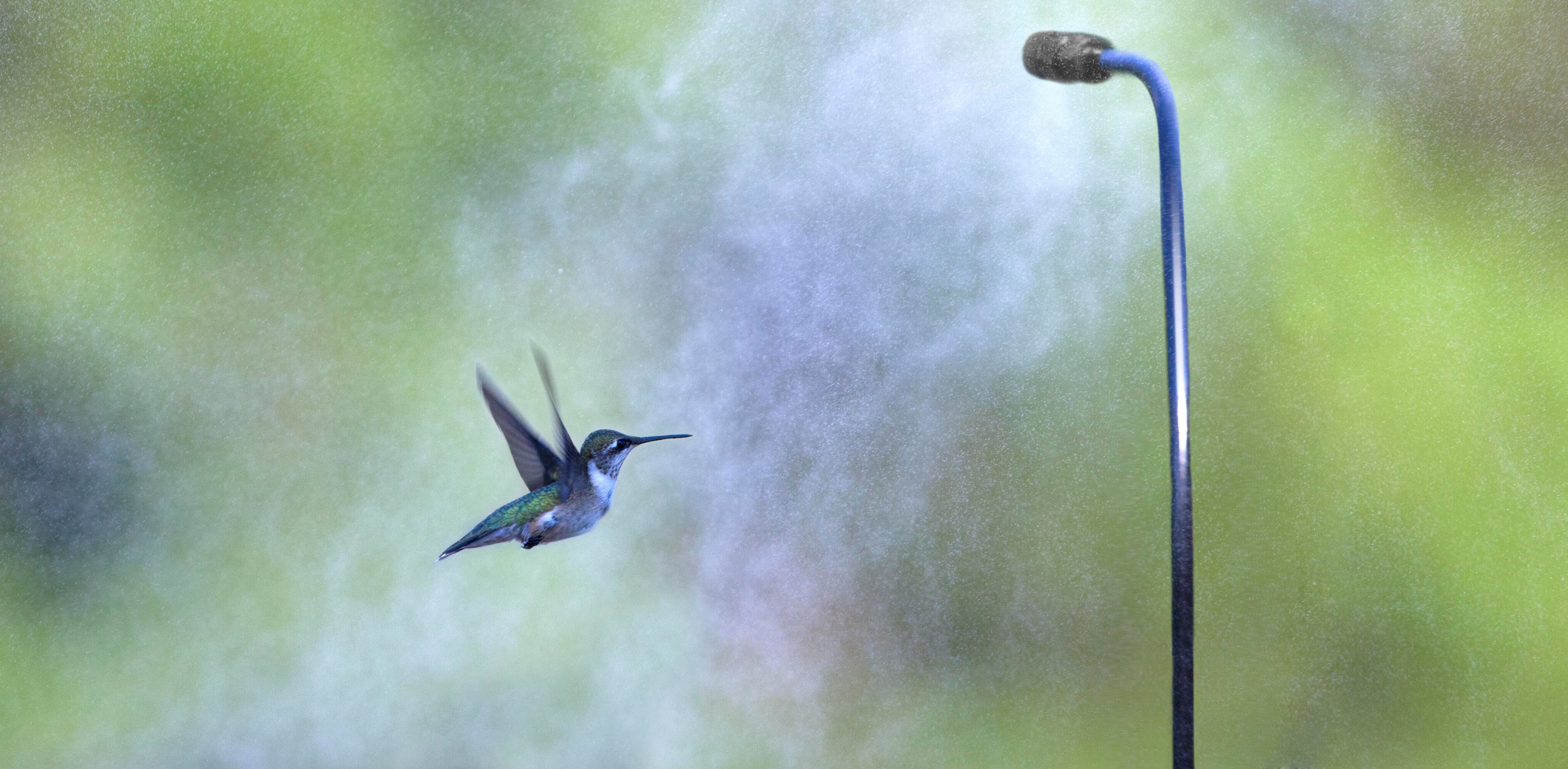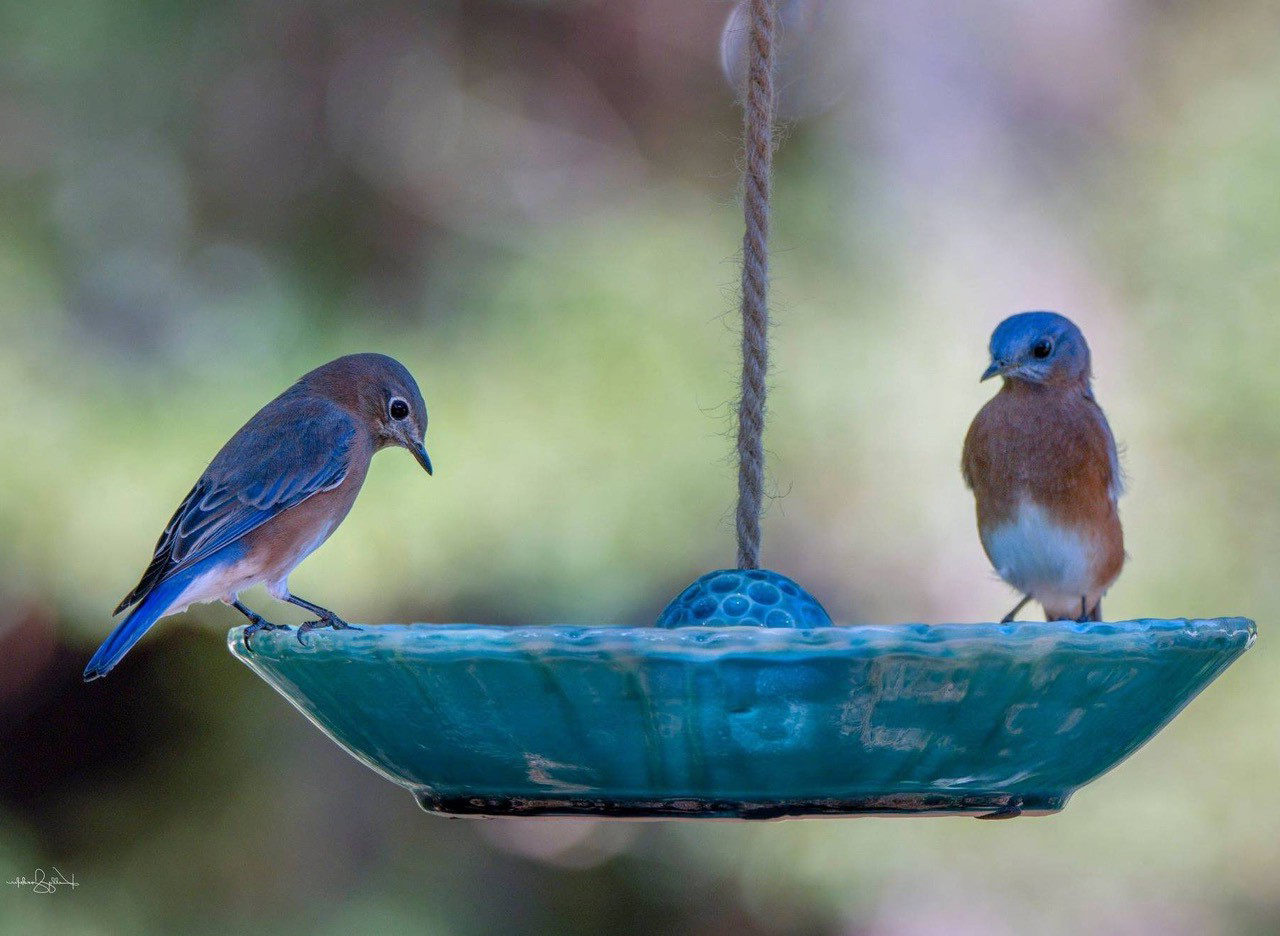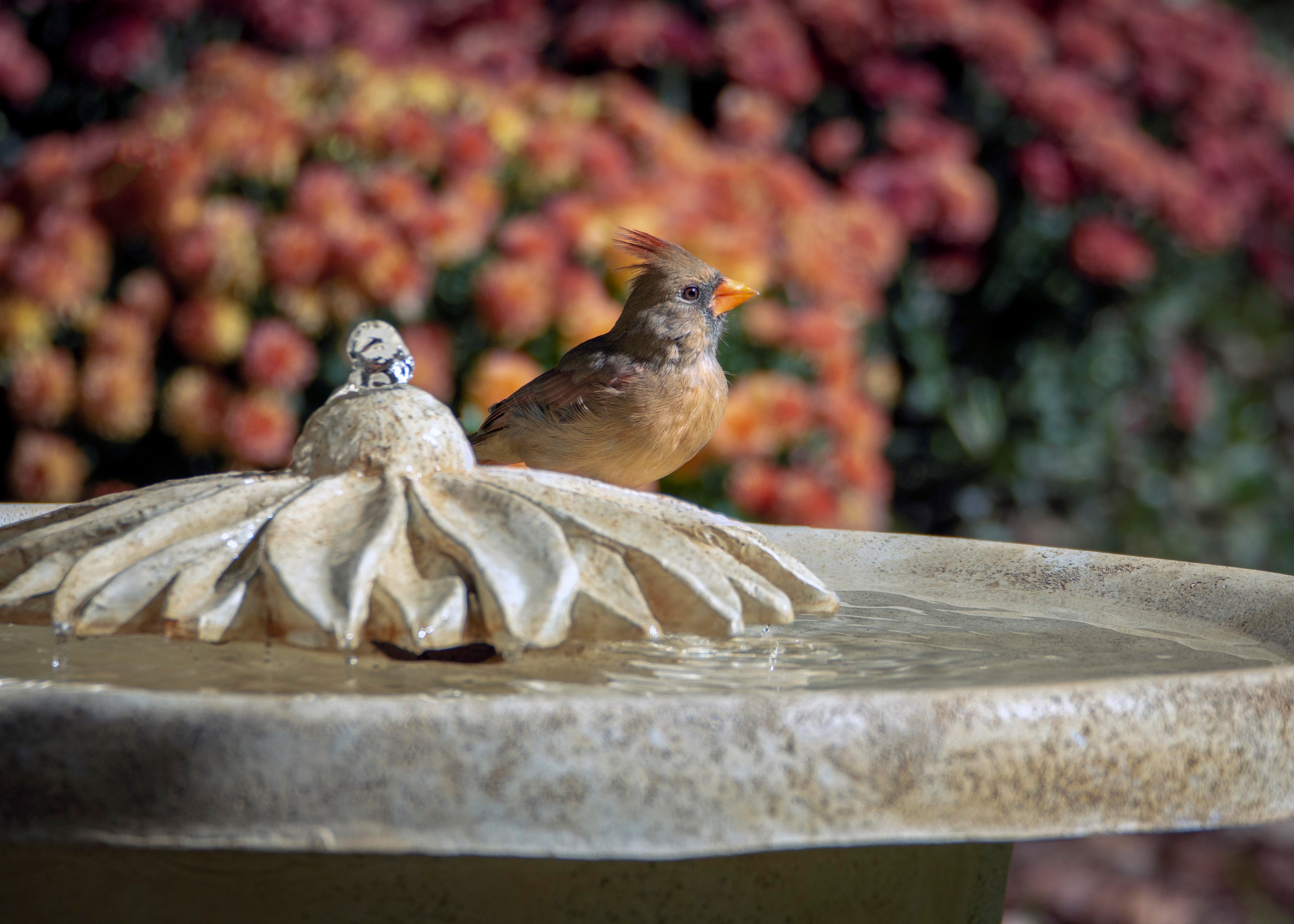-
Consider Bat Houses for Natural Insect Control and more!
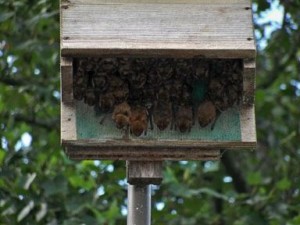 Forget the pesticides, they’re literally choking the planet, and with the mild winter we’ve had, you can count on an extremely buggy summer! Because the ground never underwent an extended hard freeze, every creepy-crawly, buzzing and flying pest will witness a bumper crop season! A real nuisance for those who love the outdoors, but it doesn’t have to be….
Forget the pesticides, they’re literally choking the planet, and with the mild winter we’ve had, you can count on an extremely buggy summer! Because the ground never underwent an extended hard freeze, every creepy-crawly, buzzing and flying pest will witness a bumper crop season! A real nuisance for those who love the outdoors, but it doesn’t have to be….Birds eat bugs, and bats eat more bugs – by the thousands per night! Although fuzzy, brown bats may appear a little on the eerie side, they are one of the most misunderstood flying creatures of the planet. Actually considered mammals, bats are essential to our ecosystem. Critical, bio-diverse services performed not only include insect control, but pollination and seed dispersal as well. In just about any given habitat; cities, deserts, woodlands, grasslands, rain forests, and your backyard, bat houses provide roosting spots for these beneficial flying mammals. Mounted high on a pole (15 to 20 feet) or on the side of a structure, bat houses will entice permanent residence if habitat is suitable.
The Center for Biological Diversity has published some astonishing numbers as far as bats’ value to farmers. The major concern is the quick-spreading White Nose Syndrome disease which has decimated entire bat populations in the last few years. Emerging in the Northeast, the fatal disease has spread south and west, wiping out complete colonies of cave-dwelling bats.
“Nationwide the loss of bats could mean exploding populations of insects no longer kept in check by these furry, fly-by-night mammals. Scientists have estimated that by keeping insect pests at bay and reducing the need for pesticides, bats are worth $22 billion annually to American farmers. In Colorado, these savings could reach $430 million per year; in South Dakota, $1.1 billion.
While bats are dying at rates topping 90 percent in some areas, and some species could face extinction, the risk to western bats and farmers is too great to justify easing restrictions for discretionary cave uses like recreation.”
The Center is asking for everyone’s help in protecting western bats, and preventing the spread of the deadly fungus. Simply keeping caves closed (nature’s bat houses) to tourism is a simple step in protecting bats and thwarting the war waged against their extinction.
Please take one minute and sign a letter to the U.S. Forest Service, asking for responsible management by maintaining current laws to keep bat caves closed to tourism.
-
Got rat problems? Use seed catchers and quality bird seed
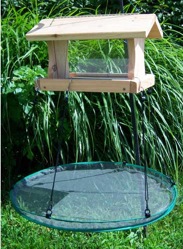 If you’ve ever seen rats crawling around the ground beneath bird feeders, they’re just looking for a meal, even though it’s enough to make your own skin crawl!
If you’ve ever seen rats crawling around the ground beneath bird feeders, they’re just looking for a meal, even though it’s enough to make your own skin crawl!Spilled seed is a major attractant of rats and other unwanted guests, in rural and especially in urban areas. The first reaction is usually: “Oh no, I have to stop feeding the birds now.” Not true!
There are some fairly simple methods to stopping the madness. One is to use seed catchers or seed trays which prevent spilled seed in the first place. The large platform area of some seed trays will attract new birds who have never used the feeder.
Another way to avoid these unwanted guests while still feeding your birds is to feed a high quality seed. Less expensive seed mixes contain fillers like millet, and finely cracked corn. Birds will continually toss these seeds out in search of the good stuff. So why not just feed the good stuff to start with? Black Oil Sunflower is a great basic seed preferred by many species. An even better choice is the Sunflower Hearts or Meats. There’s absolutely no waste, no shells, no mess. It does cost more, but again… there’s no waste, so it’s almost a wash. Nothing wasted on the ground for scouring rats, opossums, or raccoons, because all of the seed is consumed by your avian amigos!
Suet is another good choice because there’s no waste, no mess. Specialty mixes (doughs) are even meant for summer feeding. Some of the more common, or fat-based suet formulas may sour and turn rancid in summer’s extreme temperatures. But the heat will not affect suet doughs…. and both resident and migratory birds devour this stuff!
Below is a real note from one of our repeat customers, just yesterday. She phoned with some questions and had planned to purchase two seed trays. After speaking with her, the plans changed: (proof positive the above content holds some weight)
“thanks for chatting with me yesterday about seed catchers for my bird feeders. I am going to hold off on buying and change the birdseed instead to shelled sunflower nuts. I did go look outside and indeed there is a lot of millet on the ground, along with sunflower shells. I’m hoping this will work, if not I will order the seed catchers!
Thanks,
Judy”By the way, the seed catcher shown above is adjustable. It fits just about any feeder and comes in two diameters; 16 and 30-inch. The larger “SeedHoop” may even be pole mounted by creating a slit in the center of the tray. They’re versatile, durable, and best of all… they work!
-
Veterinarian Proposes Law Recognizing Pets’ True Value
Tragedy Focuses Efforts on Legislation
 A veterinarian is asking anyone who will listen – legislators, judges, fellow pet owners – if the loss of a pet is akin to the loss of furniture, a computer or a car.
A veterinarian is asking anyone who will listen – legislators, judges, fellow pet owners – if the loss of a pet is akin to the loss of furniture, a computer or a car. Kenneth Newman, a 33-year veterinarian and author of Meet Me at the Rainbow Bridge (www.meetmeattherainbowbridge.com), has proposed a law that answers his question. Gracie’s Law recognizes the emotional bond between pet and owner by entitling the owner of a pet killed through an act of malice or negligence to $25,000 in damages.
“It’s time we change the laws to more accurately reflect what pets mean to the average American,” says Newman.
Gracie’s Law would not supersede current laws, he says, which entitle owners to the property value of their pet. And it would not replace criminal prosecution for acts of malice. And owners who decline a recommended veterinarian procedure to save a pet would not be held accountable under the law, he says.
Newman’s dog Gracie was killed in April 2008 when a negligent driver backed up 25 yards without looking, crushing Newman and Gracie between two vehicles. The vet escaped with a broken leg; Gracie saved his life, he says.
“An attorney looked me in the eye and said that my dog was a piece of property, that I wasn’t entitled to anything for the dog, and that this was a simple broken-leg case,” he says.
In every state, he says, laws view pets as property. Owners are entitled to no more than replacement value; no law takes into consideration the loss of companionship, grief, or pain and suffering.
Newman says that doesn’t jibe with Americans’ attitude toward their pets. According to an American Animal Hospital Association survey, 90 percent of owners consider their animals part of the family. Other findings:
• 52 percent of Americans would rather be stranded on a deserted island with their pet than with another person.
• 83 percent call themselves “Mommy” or “Daddy” in reference to their pet.
• 59 percent celebrate their pet’s birthday.
Cases involving pet owners’ bonds are increasingly showing up in the courts, Newman points out:
• Matrimonial law: Attorneys have experienced a 23 percent increase in pet cases, according to the American Academy of Matrimonial Lawyers. This includes custody battles over pets, veterinarian bills and visitation rights. Harvard now has a course dedicated to pet law.
• The North Carolina Court of Appeals: While the plaintiff’s wrongful death lawsuit was denied, animal activists applaud a judge’s willingness to at least hear a case involving a Jack Russell terrier that died while undergoing tube feeding at a state facility.
• Texas justice: On Nov. 3, 2011, Fort Worth’s 2nd Court of Appeals ruled that value can be attached to the love of a dog. That overruled a 120-year-old Texas Supreme Court case, which held that plaintiffs can only recoup the market value of their pets.
• Largest award: In April, a Denver judge awarded Robin Lohre $65,000 for the death of her dog, Ruthie. Lohre had accused Posh Maids cleaning service of negligence for allowing the dog to get outside, where it was hit by a car. Newman notes this sets a new precedent for pet value, but that such uncapped awards may threaten affordable veterinary care.
To read Gracie’s Law and copy it to share, visit meetmeattherainbowbridge.com, click “image gallery” and scroll down.
About Kenneth Newman DVM
Kenneth Newman graduated from Purdue University with a Doctor of Veterinary Medicine degree in 1979, and has since been a practicing vet. He experienced a badly broken leg and the death of his Labrador retriever Gracie due to the negligence of a driver in April 2008. Since then, he has proposed and advocated Gracie’s Law, which recognizes that pets are more than common property. Newman lives with his wife and their son, as well as several pets.
Hummingbird Feeders
about feeders & accessories

